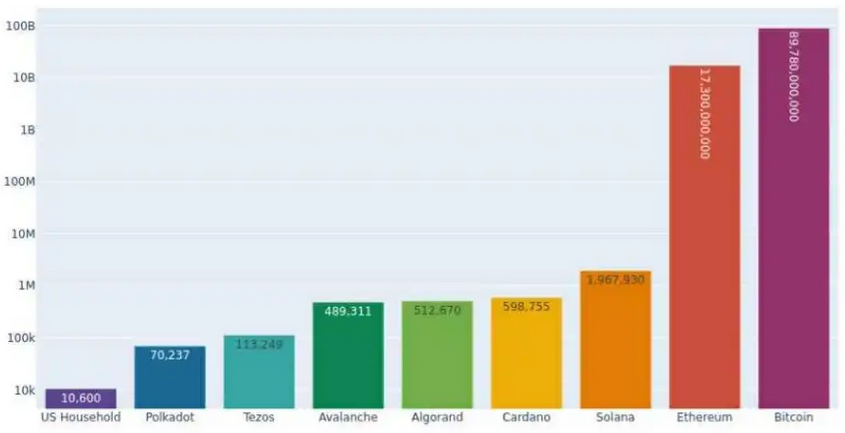New research conducted by the Crypto Carbon Ratings Institute (CCRI) has shown that Polkadot (DOT) consumes the least amount of electricity compared to other top blockchains.
According to CCRI, Polkadot, the interoperable blockchain platform, uses less electricity for its network activities than top crypto assets, including Bitcoin (BTC), Ethereum (ETH), Solana (SOL), and Cardano (ADA).
Read Also: Messari: Polkadot (DOT) Was the Asset of Choice for Institutional Investors In 2021
CCRI reported that DOT consumes just 6.6 times the electricity that the average US household uses in a year, which makes it the least power-draining digital currency among the most popular blockchains.
On the other hand, Ethereum, the largest smart contracts platform consumes 1.6 million times electricity that can power the average household in the United States. According to the report, Bitcoin consumes the highest electricity with 8.6 million times of electricity needed to power an average US household.
A chart captioned in the report shows that Ethereum (ETH) is next to Bitcoin (BTC) in terms of electricity consumption, followed by other layer-1 protocols, such as Solana (SOL), Cardano (ADA), Algorand (ALGO), Avalanche (AVAX) and Tezos (XTZ).
Read Also: Shell Becomes the First Parachain to be added to Polkadot Network

The report reads in part as follows:
“An average US household consumes about 10,600 kWh per year and therefore, the least electricity consuming network Polkadot consumes about 6.6 times the electricity and the most electricity consuming network Solana about 200 times the electricity (U.S. Energy Information Administration, 2021)…
“Bitcoin consumes much more electricity than any Proof of Stake system due to its Proof of Work consensus mechanism, resulting in the deployment of energy-intensive hardware…
“Algorand consumes up to the factor of 9 compared to other cryptocurrencies such as Cardano and Polkadot. Tezos is in between these two groups. It consumes up to factor 5 of the low-energy blockchains, but only about 50% of Algorand’s consumption.”
Follow us on Twitter, Facebook, Telegram, and Google News


